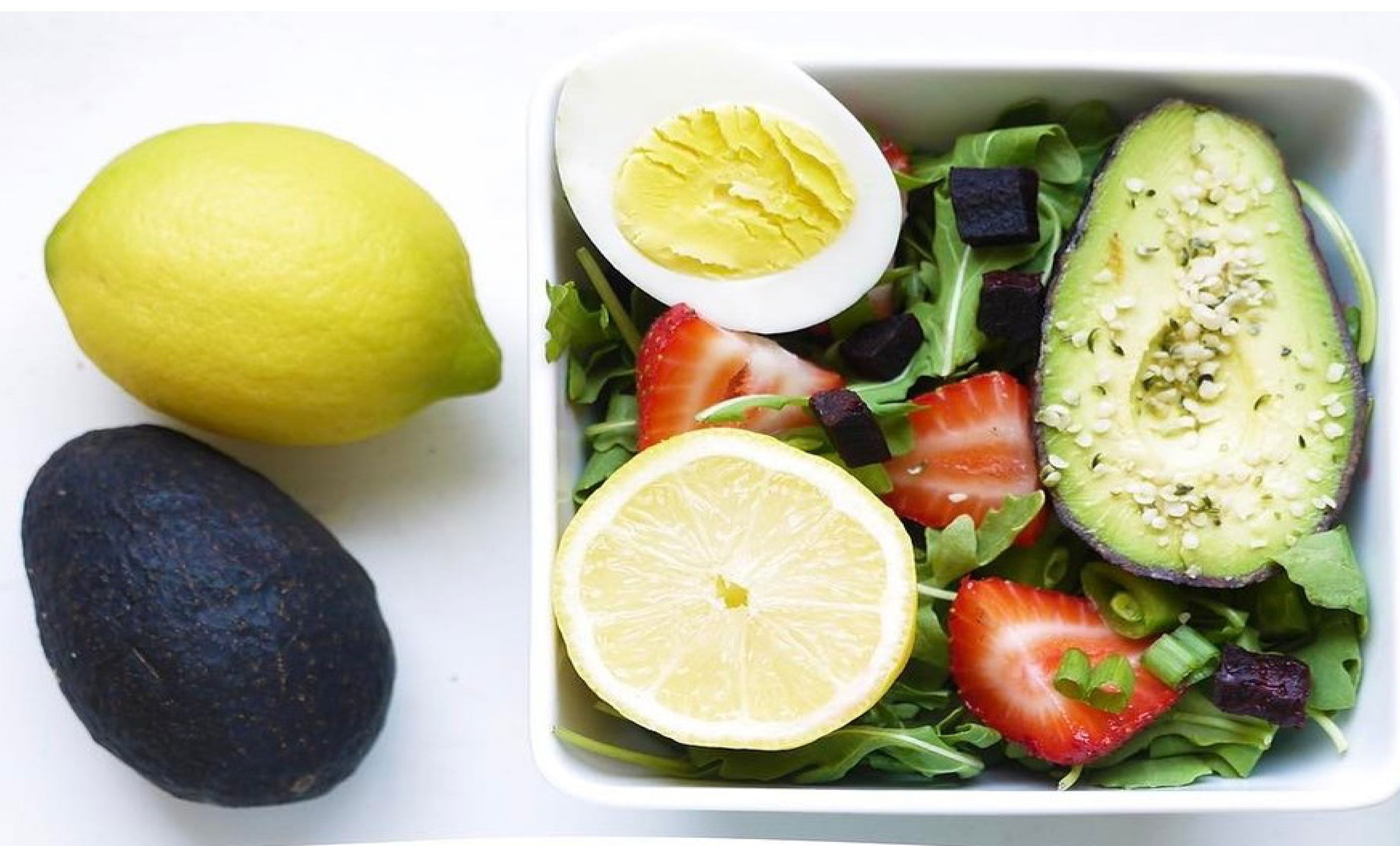Atrás quedaron los días de las aburridas ensaladas compuestas de lechuga iceberg y aderezos cargados de azúcar. Preparar una ensalada deliciosa y duradera es totalmente factible y puede ayudarte a mantenerte saludable y con energía. Repleta de proteínas, fibra, grasas saludables, vitaminas y minerales, ¡es la comida perfecta y equilibrada! Aquí tienes una guía práctica para preparar ensaladas.

Verduras de hoja verde: 2 tazas
Algunos favoritos : col rizada, espinaca, rúcula, lechuga romana.
Las verduras de hoja verde son la base de cualquier ensalada. Olvídate de la lechuga iceberg, que carece de valiosas vitaminas y minerales, y opta por verduras de hoja verde oscura (cuanto más oscuras, mejor). Las verduras de hoja verde están repletas de vitaminas, minerales y antioxidantes. Son ricas en fibra soluble e insoluble, que ayuda a reducir los niveles de colesterol y a mantener el buen funcionamiento de nuestra digestión.
Verduras de temporada: 1 taza
Verduras de otoño: calabaza de invierno, coles de Bruselas, nabos.
Verduras de invierno: zanahorias, chirivías, cebolla
Verduras de primavera: espárragos, repollo, brócoli
Verduras de verano: pepino, champiñones, berenjenas.
Añade texturas y sabores únicos para darle un toque picante a tu ensalada y hacerla más divertida de comer. Las verduras, en general, son una gran fuente de vitaminas, minerales y fibra. Opta por productos de temporada. No solo son más asequibles y fáciles de conseguir, sino que también están asociados con una mayor nutrición y un mejor sabor. ¡No es necesario que estén crudas! Me encanta agregar verduras asadas, como coles de Bruselas o calabaza, a mis ensaladas en los meses de otoño e invierno.
Proteína: 3-4 onzas
Proteínas animales: pollo, carne de res alimentada con pasto, huevos, atún salvaje, salmón.
Proteínas vegetales: lentejas, garbanzos, frijoles negros.
Las proteínas aportan poder de permanencia a nuestra ensalada y son beneficiosas para el control del peso debido a sus efectos saciantes. Las proteínas animales contienen nutrientes beneficiosos como el hierro y el zinc en su forma más biodisponible, lo que significa que podemos digerirlos, absorberlos y utilizarlos fácilmente. Los pescados de agua fría como el salmón o las sardinas contienen grasas omega-3 esenciales, que favorecen la salud del cerebro y el corazón. El pescado, la carne y los huevos se consideran proteínas completas, lo que significa que contienen todos los aminoácidos esenciales, o componentes básicos de las proteínas, que debemos obtener de los alimentos. Si decides prescindir de las proteínas animales, opta por alimentos vegetales ricos en proteínas como las legumbres. Las legumbres contienen una combinación de proteínas y carbohidratos, abundante fibra, vitaminas y minerales.
Granos integrales: 1/3 - 1/2 taza
Granos integrales: quinua, cebada, arroz integral, farro, amaranto, avena.
Agregar una porción de cereales integrales puede hacer que su ensalada dure más tiempo y le dé más textura. Los cereales integrales son una buena fuente de fibra, vitaminas B e incluso algo de proteína. Las vitaminas B ayudan al metabolismo y fortalecen el cabello, la piel y las uñas. Algunos cereales integrales como la quinoa y la cebada se consideran fuentes completas.
Fruta: 1/4 - 1/2 taza
Frutas de otoño: manzanas, peras, frambuesas.
Fruta de invierno: manzanas, limones, naranjas
Fruta de primavera: fresas, albaricoques, piña
Fruta de verano: arándanos, moras, cerezas
La fruta de temporada aporta un toque dulce junto con una gran cantidad de vitaminas y minerales, como potasio, vitamina C y betacaroteno, que convertimos en vitamina A (importante para la piel y la vista). Opte por productos de temporada para obtener el mejor sabor y nutrición. Rotar la fruta según la estación es una buena forma de asegurarse de obtener una variedad de vitaminas, minerales y fitonutrientes.
Fuente de grasa saludable: 1-2 cucharadas
Aderezos: aceite de oliva virgen extra, tahini
Otras grasas saludables: aguacate, frutos secos y semillas, aceitunas.
Olvídate de los aderezos para ensaladas comprados en las tiendas, que suelen estar cargados de azúcar y rellenos. En su lugar, haz los tuyos propios en casa con los ingredientes que tengas a mano. Es importante combinar las ensaladas con grasas saludables. Muchos de los nutrientes que se encuentran en las verduras son liposolubles, lo que significa que necesitan una fuente de grasa para que el cuerpo los utilice y absorba mejor. Un chorrito de aceite de oliva virgen extra y vinagre balsámico o un aderezo de tahini y limón serán suficientes. Agregar algunas rodajas de aguacate fresco agregará cremosidad a tu ensalada, mientras que las nueces y las semillas pueden agregarle un toque crujiente. Las grasas saludables son importantes para la piel, el cabello, la amortiguación de los órganos vitales y la producción de hormonas.







